Dental disease is a serious issue that affects most pets by the time they are 3 years of age, but daily toothbrushing can help combat the problem. Our Burlington Veterinary Center team understands that this task may seem daunting, so we provide a step-by-step tutorial to facilitate the process.
Why should I brush my pet’s teeth?
Your pet’s mouth is colonized by numerous bacteria, and these pathogens can accumulate on their teeth to form sticky deposits called plaque. If not removed, mineral deposits from your pet’s saliva cause the plaque to harden into tartar, which is a gritty substance that irritates your pet’s gingiva. The bacteria gain access under the gum line and damage the gums, bone, and other supporting tooth structures. This can lead to serious health complications, including:
- Painful gums — The irritation and inflammation cause your pet’s gums to swell and bleed, which can be extremely uncomfortable for your pet.
- Loose or missing teeth — As dental disease progresses and the supporting structures deteriorate, your pet’s teeth become loose, which can make eating painful. If they lose a diseased tooth, the resultant space can get packed with food, creating more problems.
- Tooth root abscess — Infection can sequester at the tooth root, sometimes causing a painful abscess that may rupture and result in a draining hole in your pet’s face or jaw.
- Eye problems — Your pet’s upper tooth roots are close to their eyes, and infection and inflammation can invade the ocular space, causing chronic eye drainage and potentially blindness.
- Sinusitis — Bacteria can create a hole (i.e., an oro-nasal fistula) between your pet’s mouth and nasal passage, which causes chronic sinusitis.
- Fractured jaw — When bacteria invade the jaw, the bone can weaken and fracture. Cats and small-breed dogs are at highest risk for this complication.
- Organ damage — If the bacteria enter your pet’s bloodstream, organs including the heart, kidneys, and liver can be damaged.
What is the best way to protect my pet from dental disease?
Regular professional veterinary dental cleanings are the only way to remove bacteria from your pet’s teeth and from under the gum line where the most damage occurs. Most pets should get a dental cleaning once a year, but high risk pets, such as brachycephalic breeds, toy-breed dogs, and senior pets, may need more frequent cleanings. These procedures include:
- Anesthetizing your pet — Anesthesia is necessary to perform a thorough dental cleaning on your pet, to keep them from being stressed or afraid, and to prevent potential injury from the sharp instruments used to probe and clean their teeth.
- X-raying your pet — About 50% to 60% of your pet’s dental structures are below the gum line, which means we need X-rays to properly evaluate your pet’s oral health. Without these views, our team can’t make an appropriate treatment plan.
- Cleaning your pet’s teeth — We use instruments to thoroughly remove bacteria, plaque, and tartar from your pet’s teeth. In addition, we clean subgingivally to remove the bacteria under their gum line.
- Polishing your pet’s teeth — To discourage bacteria accumulation on the tooth’s rough surface, we polish your pet’s teeth after cleaning.
- Applying fluoride — We apply fluoride to your pet’s teeth to help reduce plaque buildup.
Between cleanings, brushing your pet’s teeth is the best way to keep their mouth healthy.
How do I brush my pet’s teeth?
Most pets can learn to accept daily toothbrushing. Steps include:
- Be patient — Remember—your pet doesn’t understand why you are sticking a brush in their mouth, so you must be calm and patient when starting the process.
- Handle your pet’s mouth — First, get your pet used to their mouth being handled. Stick your fingers in their mouth and rub their teeth and gums. You can put peanut butter or tuna juice on your finger to make the experience positive for your pet.
- Choose an appropriate toothbrush — Ensure the brush you choose is small with extra soft bristles. For cats and small-breed dogs, a finger toothbrush that fits over your finger tip may be a good option.
- Choose an appropriate toothpaste — Choose a pet-specific toothpaste that contains enzymes to help control plaque. Avoid products that contain baking soda, detergents, or salt, which are commonly found in human dental products but can harm your pet.
- Choose an appropriate toothpaste flavor — Pet toothpaste products are available in numerous pet-friendly flavors, such as peanut butter, poultry, beef, and seafood. Choose a flavor that your pet prefers.
- Start slowly — Start by brushing your pet’s front teeth, and gradually work your way to the back of their mouth as they become more comfortable. Ideally, place the toothbrush bristles at the gum margin and brush in an oval pattern.
- Offer treats and praise — Praise your pet, and give them a high value treat after each toothbrushing session.
What if my pet won’t let me brush their teeth?
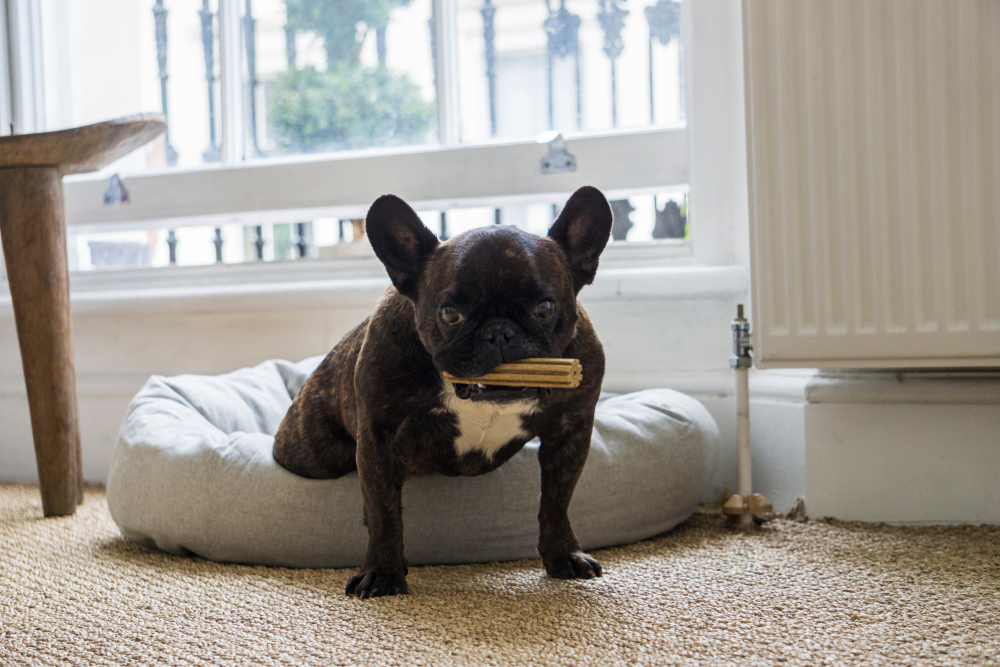
If your pet is uncooperative about toothbrushing, alternatives include:
- Dental wipes — A pet dental wipe wrapped around your finger can be a good alternative to toothbrushing.
- Dental treats — Chewing on dental treats approved by the Veterinary Oral Health Council (VOHC) can help remove plaque and tartar from your pet’s teeth.
- Dental prescription diets — Dental prescription diets are specifically formulated so the kibble pieces scrub plaque and tartar from the teeth. Some diets also contain additives to help prevent plaque from developing into tartar.
Taking an active role in your pet’s dental care will help reduce dental disease, bad breath, and potentially dangerous health complications. Contact our Fear Free-certified team at Burlington Veterinary Center if you have concerns about your pet’s dental health.


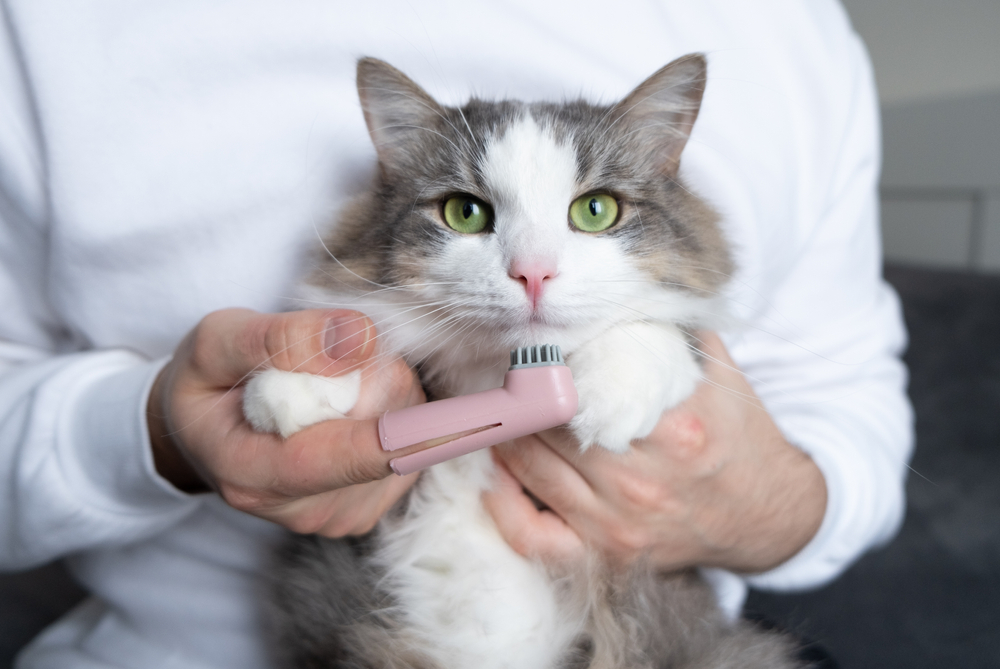
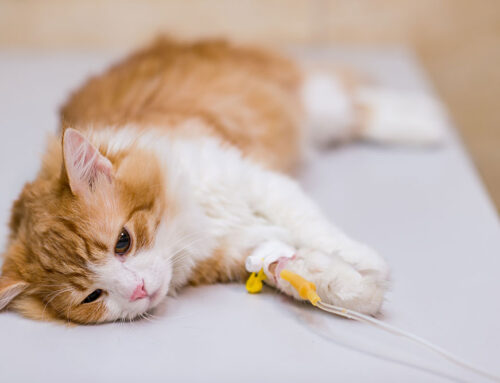
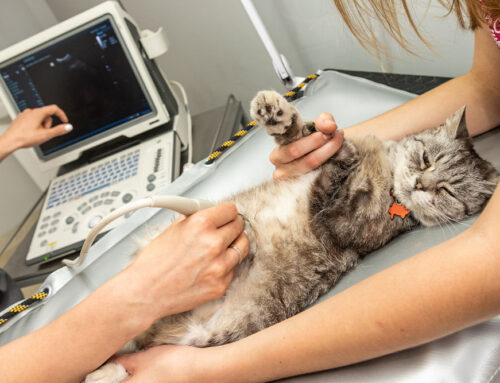
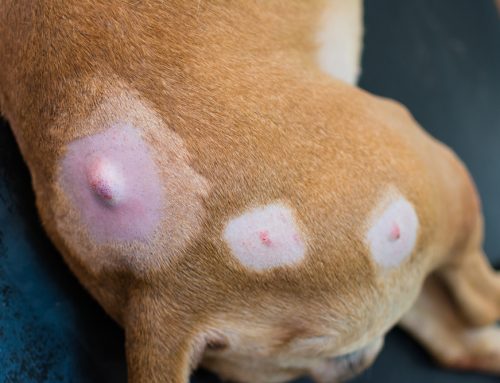
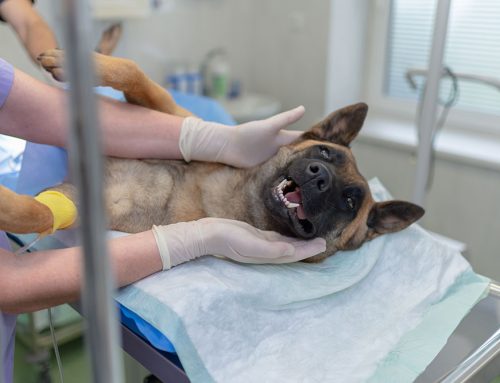
Leave A Comment